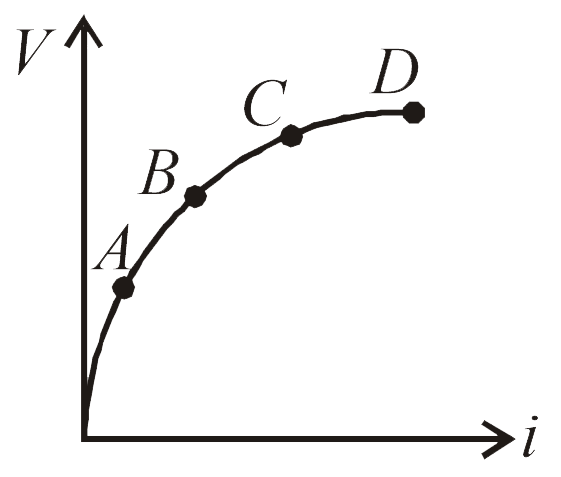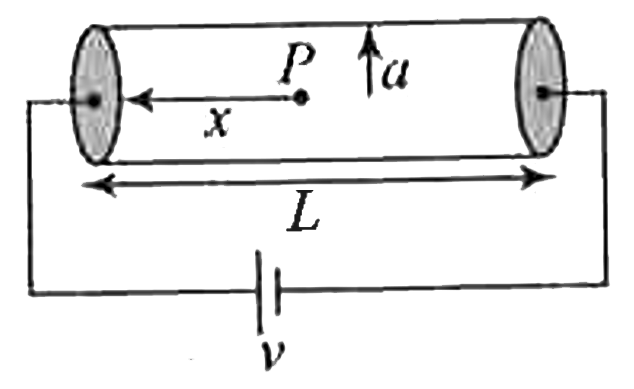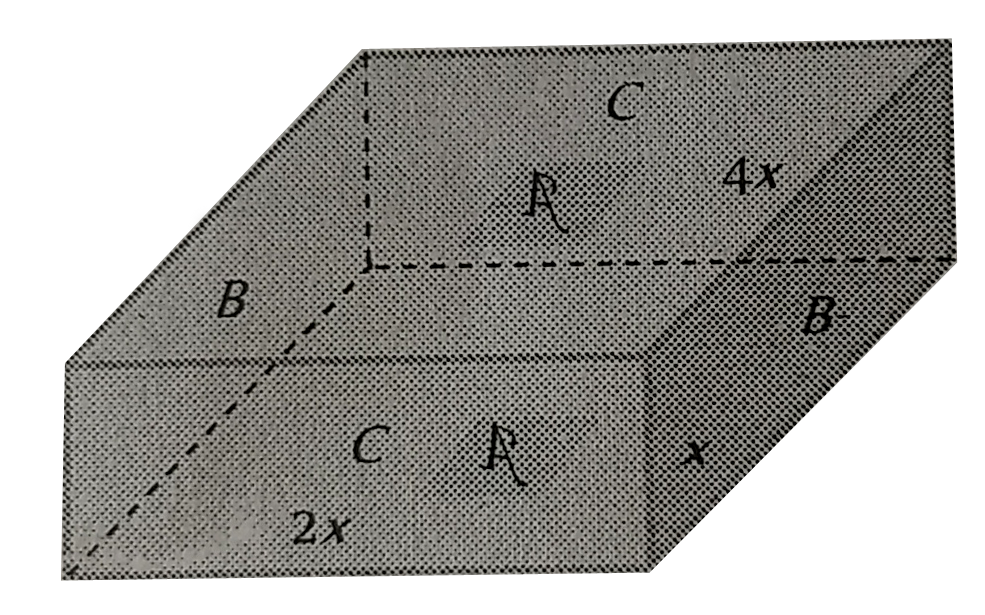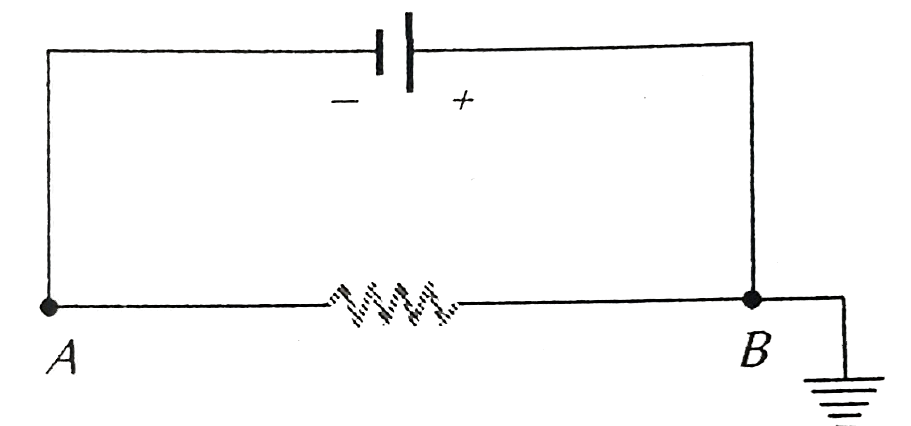Complete Solutions to Restivity and Drift Velocity of chapter ELECTRIC CURRENT & CIRCUITS of Class 12 book with complete answers and questions
| Class 12 | PHYSICS |
| Chapter | ELECTRIC CURRENT & CIRCUITS |
| CENGAGE PHYSICS DPP | Restivity and Drift Velocity |
| Number Of Questions | 30 |
| Academic Year | 2023-24 |
Is the motion of a charge across junction momentum conserving ? Why or why not ?
02:24View SolutionThe relaxation time `tau` is nearly independent of applied electric field `E` whereas it changes significiantly with temperature `T`. First fact is (in part) responsible for Ohm's law whereas the second fact leads to variation of `p` with temperature. Elaborate why ?
02:49View SolutionFollowing figures show four situations in which positive and negative charges move horizontaly through a region and give the rate at which each charge moves. Rank the situations according to the effective current through the region greatest first.
 03:22View Solution
03:22View SolutionVariation of current passing through a conductor as the voltage applied across its ends is varied as shown in the adjoining diagram. If the resistance (R) is determined at the points A, B, C and D, we will find that
 03:14View Solution
03:14View Solution`I-V` characterstic of a copper wire of length `L` and area fo cross-section `A` is shown in Fig. The slope of the curve becomes
 01:50View Solution
01:50View SolutionThe resistance R of a conductor varies with temperature t as shown in the figure. If the variation is represented by `R_(t) = R_(0)[1+ alphat +betat^(2)]`, then
 02:04View Solution
02:04View SolutionThe V - i graph for a conductor at temperature `T_(1)` and `T_(2)` are as shown in the figure. `( T_(2) - T_(1))` is proportional to
 03:04View Solution
03:04View SolutionA cylindrical conductor has uniform cross-section. Resistivity of its material increase linearly from left end to right end. If a constant current is flowing through it and at a section distance x from left end, magnitude of electric field intensity is E , which of the following graphs is correct
05:57View SolutionDimensions of a block are `1 cm xx 1cm xx 100cm`. If specific resistance of its material is `3 xx 10^(-7) ohm-m`, then the resistance between the opposite rectangular facesis
01:31View SolutionIn the above question, the resistance between the square faces is
01:18View SolutionA Steady current flows in a metalic conductor of non uniform cross section. The quantity/quantities which remain constant along the length of the conductor is/are
01:26View SolutionA current `I` is passing through a wire having two sections `P` and `O` of uniform diameters `d` and `d//2` respectively. If the mean drift velocity of electrons in section `P` and `Q` is denoted by `v_(P)` and `v_(Q)` respectively, then
02:22View SolutionThe length of the resistance wire is increased by `10%`. What is the corresponding change in the resistance of wire?
02:35View SolutionWhich of the follwing characteristies of electrons determines the current in a conductor?
01:43View SolutionTemperature dependence of resistivity p(T) of semiconductors, insulators and metals is significantly based on the following factors:
04:29View SolutionA cylindrical solid of length L and radius a is connected across a source of emf V and negligible internal resistance shown in figure. The resistivity of the rod at point P at a distance x from left end is given by `rho=bx` (where b is a positive constant). Find the electric field at point P.
 04:52View Solution
04:52View SolutionA common flashlight bulb is rated 0.30A and 2.7V (the values of the current and voltage under operating conditions.) If the resistance of the tungsten bulb filament at room temperature `20^(@)C` is `1.0Omega` and its temperature coefficient of resistivity is `4.0 xx 10^(-3)C^(-1)`, then find the temperature in centigrade of the filament when the bulb is on. (Consider the variation of resistance to be linear with temperature.)
View SolutionTwo wires of resistance `R_(1)` and `R_(2)` have temperature coefficient of resistance `alpha_(1)` and `alpha_(2)` respectively. These are joined in series. The effective temperature coefficient of resistance is
03:04View SolutionTwo resistance `R_(1)` and `R_(2)` are made of different material. The temperature coefficient of the material of `R_(1)` is `alpha` and of the material of `R_(2)` is `-beta`. Then resistance of the series combination of `R_(1)` and `R_(2)` will not change with temperature, if `R_(1)//R_(2)` will not change with temperature if `R_(1)//R_(2)` equals
02:05View SolutionAn ionization chamber with parallel conducting plates as anode and cathode has `5 xx 10^(7)` electrons and the same number of singly-charged positive ions per `cm^(2)`. The electrons are moving at `0.4 m//s`. The current density from anode to cathodes `4 mu A//m^(2)`. The velocity of positive ions moving towards cathode is
04:50View SolutionThe current in conductor varies with time `t` as `I = 2 t + 3 t^(2)` where `I` is in ampere and `t` in seconds. Electric charge flowing through a section of the conductor during `t = 2 sec` to `t = 3 sec` is
02:29View SolutionThe resistance of a wire of iron is `10 ohm` and temperature coefficient of resistivity is `5 xx 10^-3//.^@C`, At `20^@C` it carries `30 mA` of current. Keeping constant potential difference between its ends. The temperature of the wire is raised to `120^@C`. The current in `mA` that flows in the wire now is.
02:50View SolutionLength of a hollow tube is `5 m`, its outer diameter is `10 cm` and thickness of its wall is 5 mm. If resistivity of the material of the tube is `1.7 xx 10^(-8) Omega xx m` then resistance of tube will be
02:49View SolutionIn order to increase the resistance of a given wire of uniform cross section to four times its value, a fraction of its length is stretched uniformly till the full length of the wire becoes `3/2` times the original length. What is the value of this fraction?
08:09View SolutionFollowing figure shows cross-section through three long conductors of the same length and material, with square cross-section of edge lengths as shown. Conductor `B` will snugly within conductor `B`. Relationship between their end to end resistance is
 02:01View Solution
02:01View SolutionIn figure shows a rectangular block with dimensions x , 2 x and 4 x . Electrical contacts can be made to the block between opposite pairs of faces (for example, between the faces labelled A - A , B - B and C - C ). Between which two faces would the maximum electrical resistance be obtained ( A - A : Top and bottom faces, B - B : Left and right faces, C - C : Front and rear faces)
 05:36View Solution
05:36View SolutionA battery is connected to a uniform resistance wire AB and B is earthed. Which one of the graphs below shows how the current density J varies along AB
 02:08View Solution
02:08View SolutionTwo wires each of radius of cross section `r` but of different materials are connected together end to end (in series). If the densities of charge carries in the two wires are in the ratio `1:4`, the drift velocity of electrons in the two wires will be in the ratio:
01:46View SolutionConsider a conductor of variable cross section in which current is flowing from cross section 1 to 2. Then
 04:32View Solution
04:32View SolutionA 150 m long metal wire connects points A and B. The electric potential at point B is 50V less than that at point A. If the conductivity of the metal is `60 xx 10^(6)mho//m` then magnitude of the current density in the wire is equal to:
View Solution
Restivity and Drift Velocity questions and complete solutions for chapter ELECTRIC CURRENT & CIRCUITS of CENGAGE PHYSICS (HINGLISH) of Class 12
